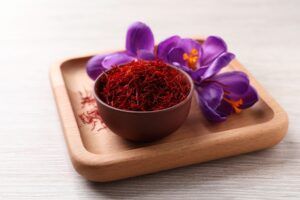



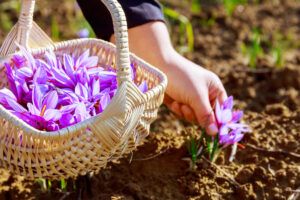

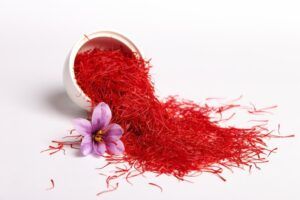
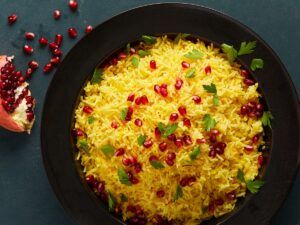
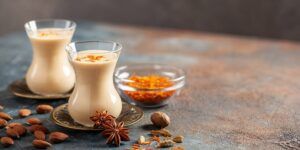


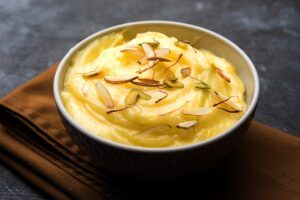
Saffron can be put into different types based on how it looks and what it contains. In physical classification, saffron is put into groups based on its size and shape, but in content classification, the focus is on how good the saffron is.
Each strand of saffron is made up of two parts. These parts are vital for telling the different kinds of saffron apart:
TYPES OF SAFFRON
The red and yellow parts of the saffron are together in a single strand. So that about 30% of the yellow part is red, and 70% of the red part is yellow.
In this type of classification, the saffron is whole, and the stigmas of the three saffron branches are not separated from the white part of the saffron (or the saffron cream).
This model can be set up in both a one-way and a two-way way. In the one-way arrangement, the creams and stigmas are put on top of each other. In the two-way arrangement, however, the stigmas are put on both sides, and the creams are put in the middle.
In pushal saffron, the saffron cream (the white part) is kept away from under the flower so that the stigmas have 1-3 mm of cream.
Some yellow or white can be seen at the end of the stigmas of the three branches of saffron, which gives it a pocket-like shape. This is why saffron is called Pushal.
There are two kinds of pushal saffron:
This model of saffron is given a grade from 1 to 3 based on how rough the stigma is and how much cream is on it.
The most widely used and common types of saffron is for people’s use, and consumers are more familiar with this type of saffron. There are different grades of Sargol saffron, one of which is called AII-Red. In pure Sargol saffron, the cream or white part is wholly taken away, leaving only the red part. This is why it is called “all red.”
Sargol saffron is graded and priced differently based on how thick the stigmas are, how fine or coarse they are, and whether or not they are broken.
It is hard to say what kind of saffron Sargol is. Two things, called “stigma length” and “the presence or absence of white pieces of the root that have turned red and are mixed in with the load,” are used to grade saffron from 1 to 3.
This type of saffron has beautiful color and shape, and it smells great. This kind of saffron has three smooth, unbroken strands of stigmas that are connected to each other (unlike Sargol saffron, where the stigmas have fractures).
Because of this, this kind of saffron looks better and costs more than Sargol saffron. However, most people prefer to buy Sargol saffron, which has the same color and smell as Negin saffron but costs less.
Customers from other countries are more likely to buy expensive saffron.
There are two kinds of Negin saffron:
Konj or White saffron is not in a variety of types of saffron. After the head is separated from the stalk, the root or white part is taken. In Europe, this part is called “white saffron.”
Most people think that the smelliest part of saffron is the root, but scientific studies and tests show that the red part has more useful substances. Crocin is one of these chemicals. It moves from the red stigma part of the saffron plant to the white root part. Because the cream part of the saffron has more water, it makes the smell of the saffron root stronger.
Saffron root does not have crocin, which gives saffron its color, but it has the same qualities as red saffron.



